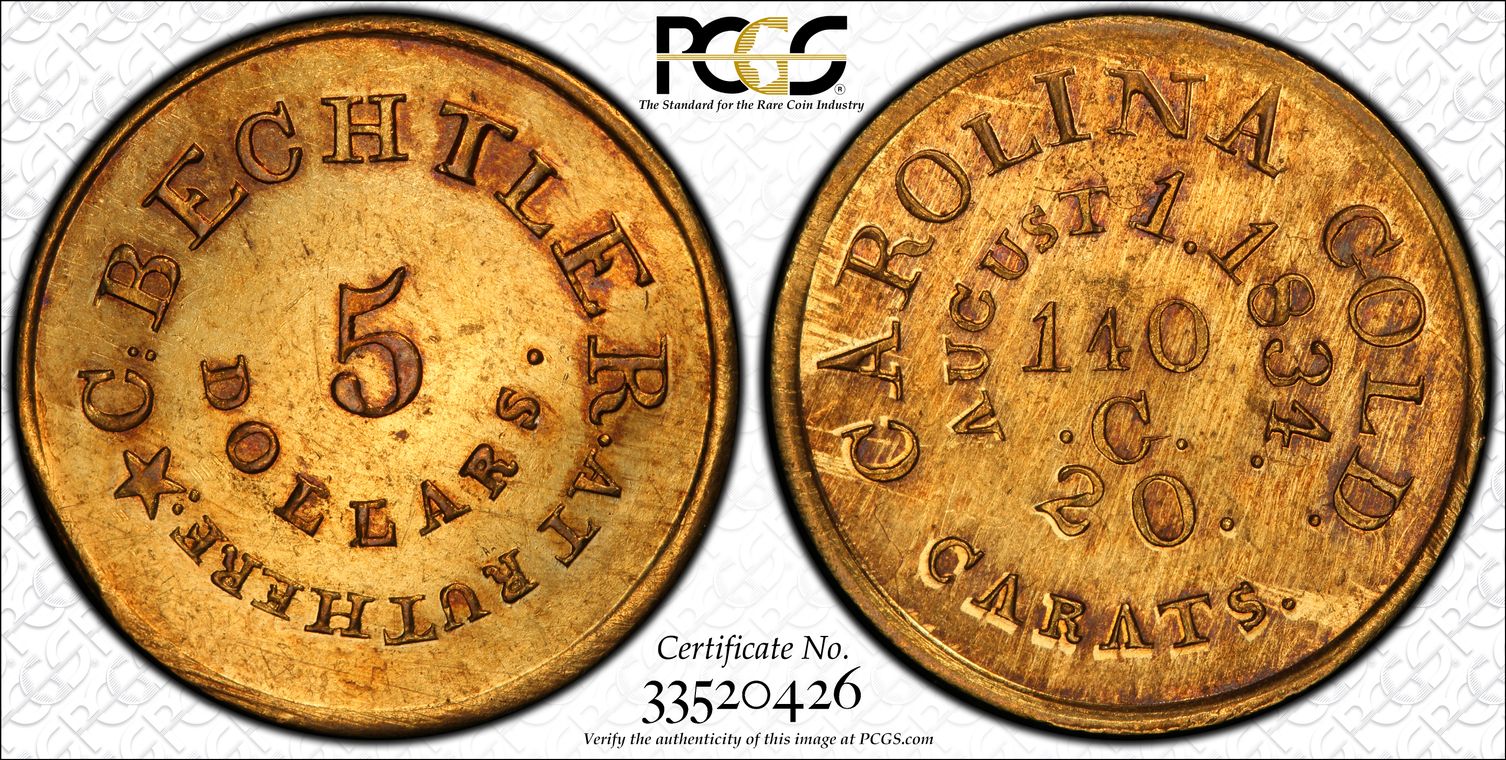(1834-37) $5 C. Bechtler, 20 Distant RUTHERF: MS61 认证号33520426, PCGS号10115
专家评论
Ron Guth
This variety of Bechtler gold is interesting for several reasons. The date of August 1, 1834 was not the exact date on which these coins were struck; it was merely an indication that the coins complied with the U.S. Coinage Act of 1834. That Act, which went into effect on August 1, 1834, reset the weights of American gold coins across the board. In the case of Half Eagles ($5 gold pieces), the weight was reduced to exactly 116 grains. Bechtler's earlier emissions of $5 coins contained 150 grains of 20 carat gold, or 125 grains of gold. Thus, like all federal gold coins, the old-style Bechtler coins were in danger of being melted since their gold value exceeded their face value. The Bechtler $5 coins issued after the Coinage Act of 1834 went into effect contained 140 grains of 20 carat gold, or 116.66 grains. This put them slightly over the value of federal gold coins, but not enough to warrant their melting, and enough to guarantee their acceptance in the region. This helps explain why Bechtler's gold coin survived at such a high rate compared to other Pioneer gold coins.
On the Kagin 19 variety, RUTHERFORD is abbreviated to RUTHERF. and the 20 on the opposite side is distant from the word CARATS. Kagin rated this variety as Rarity 6+ and we know of at least fifteen examples. Only two Mint State examples are known - one PCGS MS60 and a single NGC MS61.























